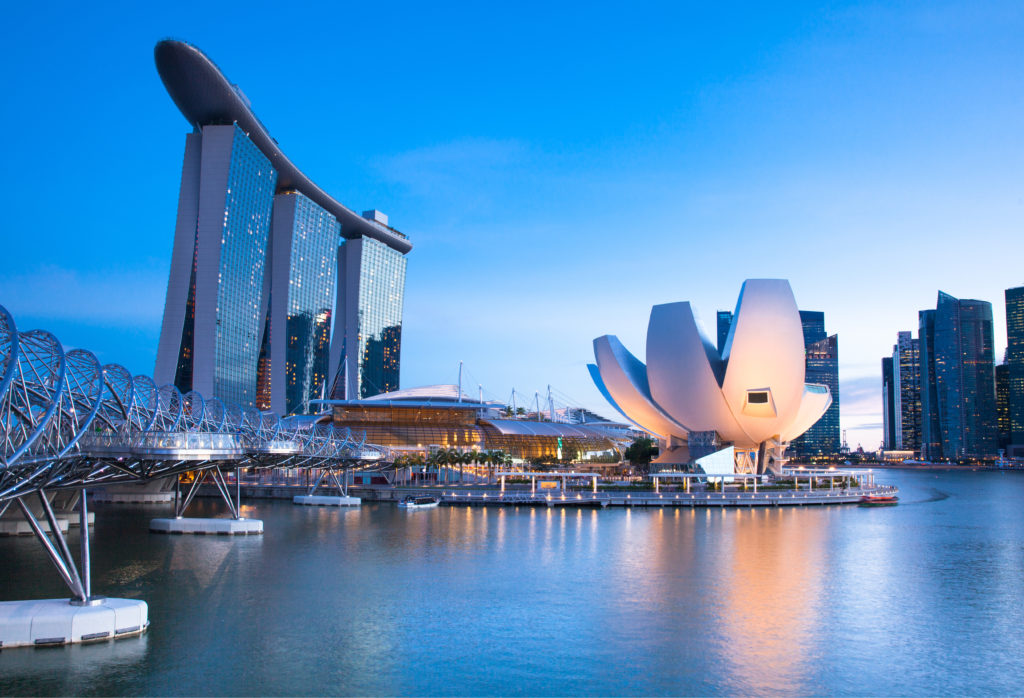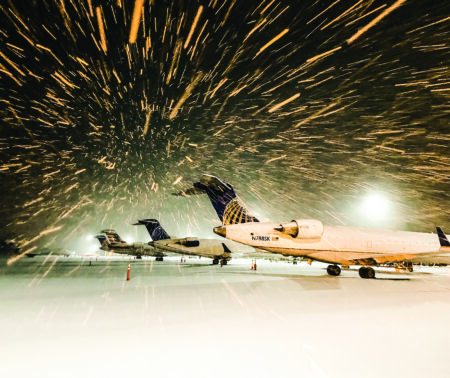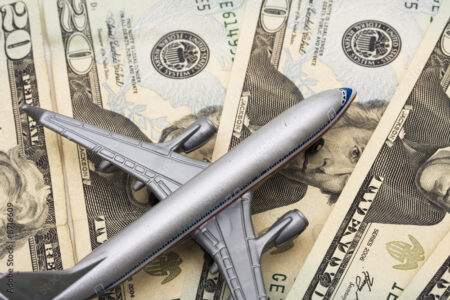Words | Ralph Jennings
Southeast Asia’s business aviation sector is ready to cater for a growing customer base once the Covid-19 pandemic subsides.
Southeast Asia is shaping up as one of the world’s first places to emerge from the economic wreckage of Covid-19. Countries such as the manufacturing hub Vietnam and the financial centre Singapore are calling their disease caseloads under control and some are gingerly starting to reopen borders to international flights.
The business aviation industry expects a pickup as borders open, but that rebound will eventually spotlight Southeast Asia’s lag in its development of fixed based operators and other services that private jet fliers expect in other parts of the world.
“In terms of FBOs, the availability is quite limited in Asia if you compare it to the Middle East or North America,” said Jeffrey Chiang, chief operating officer with the 140-member Asian Business Aviation Association.
But despite this year’s economic malaise, that’s starting to change in Singapore, Bangkok, Kuala Lumpur and other Southeast Asian hub cities with passenger demand plus a bit of existing basic infrastructure, industry people believe. Covid-19 is one of the reasons.
“Once the economy picks up, there’s all the more reason for these high net-worth individuals to realize that business aviation is a lot more secure and safe than commercial,” Chiang says.
In Kuala Lumpur, to name one example, domestic charters keep coming to the SkyPark FBO and “we have a lot more requests than ever before” as passengers hope to avoid the health risks of commercial flights, said Aida Ismail, regional director in the Malaysian capital with Dubai-based ground services firm Hadid.
At the beginning of 2020, demand for access to business aircraft in Southeast Asia had jumped so travelers could get home before lockdowns and travel restrictions took effect. Business jets were the only way out if scheduled flights had shut down, says Dennis Lau, a Hong Kong based analyst with civil aviation market intelligence firm Ascend by Cirium.
Return of economic growth
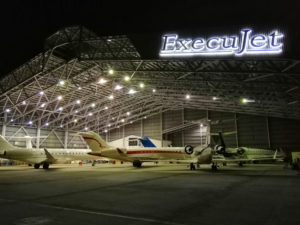
The region of 10 countries and about 650 million people had been growing faster than developed parts of the world before this year, more than 6% annually in some spots. Factory exports, tourism and domestic consumption fueled the growth.
However, Southeast Asia’s economy will still decline 4.2% this year, the Global Economic Outlook by Oxford Economics says, and economists warn of a further downturn sparked by poor export demand in Western countries where Covid-19 cases are surging again.
But Southeast Asian countries aside from Indonesia, Malaysia and the Philippines have beat the worst of Covid-19, Moody’s Analytics says in an October 2020 research report. Export-oriented Malaysia, Singapore and Vietnam are seeing increases in offshore demand. Retail sales are rebounding, even in Singapore and Thailand where the pandemic stalled their all-important tourism sectors.
Lack of business jet services
Business aviation fliers will visit Southeast Asia to chase expansions and investment. If that demand grows, the region will need more FBOs and ground services believe analysts. Southeast Asia remains largely poor despite recent growth, and officials in many countries remain focused on more basic economic priorities.
“Asia is unique in that there simply isn’t enough infrastructure and service providers,” says Jeffrey Lowe, managing director of the Hong Kong-based business aviation consulting firm Asian Sky Group. “It is certainly one of the issues holding back the industry.”
As of the end of 2016, the Asia Pacific business jet fleet stood at 1,155 jets. The region that covers Southeast Asia and beyond supports just 61 FBOs and 76 maintenance, repair and overhaul stations (MROs) according to Lowe. On average, the Asia Pacific has one FBO for each 15 jets and one MRO center for every 19.
The USA, by comparison, supports 3,384 FBOs and about 2,500 MROs, meaning that there is one MRO facility for every five private aircraft and an FBO available for every four planes.
“These are envy-inducing ratios, making the US market the standard bearer for the industry worldwide,” Lowe says. “In the Asia Pacific, we can only look at the US numbers and hope for that kind of future.”
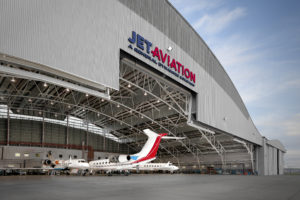
Anchor FBOs on the move
People who work in business aviation point to Singapore, Kuala Lumpur, Bangkok and Jakarta as Southeast Asian cities with the best FBOs. Some of these FBOs are eyeing expansions of space or services.
At Singapore’s Seletar Airport, Canadian business jet manufacturer Bombardier is expanding hangar space and planning to add services in tandem with business aviation services provider Jetex. Jetex plans to bulk up trip-planning help for Bombardier passengers.
The Skypark FBO in Kuala Lumpur is planning a renovation to improve aircraft maintenance, expand parking and add a Covid-19 testing station, Ismail said.
In Thailand, private jet maintenance and charter service Siam Land Flying Co. will build its first FBO at Phuket International airport in 2021, Chiang forecasts. That base would take private jets straight to one of Southeast Asia’s top tourist regions.
Infrastructure in the region lurched forward in 2018 after Jet Aviation acquired Hawker Pacific to increase regional support and Dassault Aviation acquired ExecuJet MRO services, creating what the Asian Sky Group calls a “larger footprint” in Asia, particularly the southeast.
Philippine-based charter service Asian Aerospace operates office-equipped hangars at international airports in Manila, Clark and Cebu.
No one has opened an FBO in the smaller, poorer Southeast Asian countries Cambodia or Laos. Business flights to both countries are too infrequent to justify the investment, Chiang believes.
Slow to change
Southeast Asia still stands out for lack of business aviation infrastructure and service providers, Lowe said. About two thirds of Asian FBOs, for example, lack the mobile customs and immigration portals that are considered a standard in other parts of the world, Asian Sky Group says. Only 71% of Asian FBOs have private jet terminals, it says. Countries in the region generally don’t see enough benefits in business aviation to make it a development priority. Chiang says, “Right now, it’s still about educating the various governments about business aviation as a business tool, where they can kind of speed up the economic recovery and create jobs.”
However there’s no limit in Southeast Asia to the types of business that use private aircraft. Resort owners in Indonesia use them to reach property accessible only by seaplane, while global corporations board them to access their offices around the world, Lowe said. Buyers come too from agriculture, banking and property.
Most owners in Southeast Asia use trusts or special-purpose companies to register private aircraft, so the identity of many owners is unknown, Lau notes.
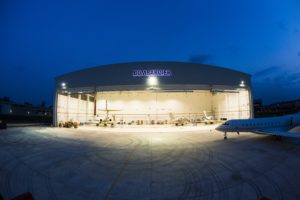
The severe limitations on commercial flights this year raised the urgency of accessing private aircraft, believes Mark Winzar, senior business development vice president for Asia with maintenance support and financing firm Jet Support Services.
“Owning an aircraft becomes a vital business tool,” Winzar says. “New owners are also exploring the opportunity of chartering their aircraft to meet demand, given the commercial market slump.”
Used aircraft have been uniquely popular in 2020 because of “competitive” prices, he added.
Signs of a rebound
The global pandemic has hobbled business for FBOs and maintenance services in Southeast Asia, according to industry insiders. “With most countries having strict travel and quarantine restrictions in place, there has been much reduced demand for business jet use,” Lau says. “Travelers are still subject to the same restrictions, whether they are traveling privately or on commercial flights.”
Some countries also impose entry and quarantine restrictions on private aircraft flight crews, which further restricts operations, he said.
Most of Southeast Asia remains closed to ordinary foreign travelers as governments hope to throttle Covid-19 at home without risk of infection from abroad.
Ambitions around Southeast Asia to improve existing bases or add new ones have slowed this year because of anti-pandemic controls, Winzar said. Covid-19 containment measures have barred even domestic travel in some Southeast Asia countries in 2020, especially in the earlier part of the year.
“There are some great FBOs throughout the region, particularly at Bangkok, Kuala Lumpur, Singapore and Jakarta,” Winzar said. “This year has been very tough for FBOs, but we are witnessing the green shoots of recovery and expect the established facilities to continue to improve.”
From September 2020 Singapore began letting in travelers from Australia, Brunei, China, New Zealand and Vietnam as all places were reporting low infection rates. Hong Kong passengers are eligible to visit Singapore as part of a bubble channel that will run through December 31.
Fear of illness on commercial flights could keep steering passengers to private jets as the region gets wealthier, Lau believes. “Southeast Asia has potential to grow, with more people able to afford business jet travel,” he says. “Perhaps those who used business jets for the first time just before or during the pandemic have experienced the convenience and peace of mind and will increase their use of business jets in the future.”
Business jet use will pick up in 2021 among fliers who need to hold on-site,
face-to-face meetings, Ismail says. SkyPark FBO is positioning to attract aircraft from Hong Kong, where parking is maxing out, she said. “I’m confident that many investors are willing to put in the money when they know the business is here,” she adds.


